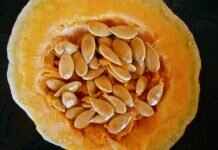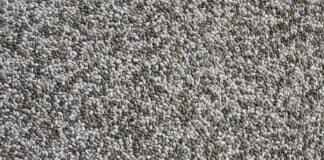This article delves into the eye health benefits of anthocyanins, powerful antioxidants found in various fruits and vegetables. These compounds not only enhance vision but also offer protection against numerous eye diseases. By understanding their sources, mechanisms, and practical applications, you can effectively incorporate these benefits into your daily life.
What are Anthocyanins?
Anthocyanins are natural pigments responsible for the vibrant colors in many fruits and vegetables. As a type of flavonoid, they are renowned for their antioxidant properties, which play a crucial role in promoting overall health, especially eye health.
Sources of Anthocyanins
- Berries (blueberries, blackberries, raspberries)
- Red cabbage
- Black rice
- Cherries
- Eggplant
Incorporating these foods into your diet can significantly boost your intake of anthocyanins.
How Anthocyanins Benefit Eye Health
Research indicates that anthocyanins can improve vision and protect against age-related eye diseases. They help to reduce oxidative stress, which is a significant factor in maintaining eye health.
Protecting Against Macular Degeneration
Macular degeneration is a leading cause of vision loss among older adults. Studies suggest that anthocyanins may slow its progression by combating oxidative damage to retinal cells.
Research Findings on Macular Degeneration
Numerous studies have shown a correlation between high anthocyanin intake and a reduced risk of macular degeneration, indicating their protective role in eye health.
Dietary Recommendations
To mitigate the risk of macular degeneration, aim to consume a variety of colorful fruits and vegetables rich in anthocyanins.
Reducing Eye Fatigue
In today’s digital age, eye fatigue is common. Anthocyanins may alleviate symptoms by improving blood circulation to the eyes, enhancing overall comfort and performance.
Enhancing Night Vision
Some studies suggest that anthocyanins may improve night vision by increasing the regeneration of rhodopsin, a pigment essential for low-light vision, benefiting those who drive at night.
Combining Anthocyanins with Other Nutrients
Pairing anthocyanins with other eye-friendly nutrients, such as omega-3 fatty acids and vitamins C and E, can amplify their protective effects, creating a synergistic approach to eye health.
Practical Ways to Incorporate Anthocyanins into Your Diet
Incorporating anthocyanin-rich foods into your daily meals is simple. Consider adding berries to your smoothies, salads, or yogurt. This not only enhances your diet but also promotes optimal eye health.
Conclusion
In conclusion, the eye health benefits of anthocyanins are substantial and well-supported by research. By incorporating these powerful antioxidants into your diet, you can enhance your vision and protect against age-related eye diseases.

What are Anthocyanins?
Anthocyanins are a group of natural pigments that belong to the flavonoid family, primarily responsible for the vivid hues of many fruits and vegetables. These pigments can appear in shades of red, purple, and blue, depending on their pH levels. Found abundantly in foods such as blueberries, blackberries, cherries, and red cabbage, anthocyanins not only provide aesthetic appeal but also offer numerous health benefits.
One of the most significant attributes of anthocyanins is their antioxidant properties. These compounds help neutralize free radicals in the body, thereby reducing oxidative stress and inflammation. This is crucial for maintaining overall health and can be particularly beneficial for eye health.
Research has shown that anthocyanins may play a role in protecting against various eye conditions, including cataracts and macular degeneration. Their ability to improve blood circulation in the eye can enhance visual performance and reduce symptoms of eye fatigue, which is increasingly common in our digital age.
Incorporating anthocyanin-rich foods into your diet is straightforward and delicious. Consider adding a handful of berries to your morning smoothie, tossing some purple cabbage into your salad, or enjoying a warm bowl of black rice. By diversifying your intake of these colorful foods, you can harness the full spectrum of health benefits that anthocyanins have to offer.
In conclusion, anthocyanins are not just responsible for the beautiful colors of fruits and vegetables; they are also powerful allies in promoting eye health and overall well-being. By making conscious dietary choices, you can easily include these beneficial compounds in your daily meals.

Sources of Anthocyanins
Anthocyanins are a type of flavonoid with antioxidant properties, primarily responsible for the rich colors of many fruits and vegetables. These compounds not only enhance the visual appeal of our food but also offer significant health benefits, particularly for eye health. Incorporating anthocyanin-rich foods into your diet can be a delicious way to promote better vision and overall wellness.
Here are some of the top sources of anthocyanins:
- Berries: Blueberries, blackberries, strawberries, and raspberries are among the richest sources of anthocyanins. These small fruits are not only tasty but also packed with antioxidants that help combat oxidative stress.
- Red Cabbage: This vibrant vegetable is loaded with anthocyanins and is easy to add to salads, stir-fries, or as a side dish. Its deep purple hue signals a wealth of nutrients.
- Black Rice: Often referred to as “forbidden rice,” black rice is a whole grain that contains high levels of anthocyanins. It can be used in a variety of dishes, from salads to desserts.
- Cherries: Sweet and tart cherries are another excellent source of anthocyanins. They can be enjoyed fresh, dried, or in juices.
- Eggplant: The skin of eggplant contains anthocyanins, making it a nutritious addition to many meals. Grilled, roasted, or baked, eggplant can be a versatile ingredient in your kitchen.
- Plums: Plums are not only juicy and delicious but also rich in anthocyanins, providing a sweet way to boost your antioxidant intake.
By incorporating a variety of these foods into your daily meals, you can enhance your diet with anthocyanins and support your eye health. Aim for a colorful plate to maximize the benefits of these powerful compounds.

How Anthocyanins Benefit Eye Health
Anthocyanins, the vibrant pigments found in many fruits and vegetables, are gaining attention for their potential eye health benefits. Research indicates that these powerful antioxidants may play a crucial role in improving vision and protecting against various age-related eye diseases.
One of the primary ways anthocyanins contribute to eye health is by combating oxidative stress. Oxidative stress occurs when there is an imbalance between free radicals and antioxidants in the body, leading to cellular damage. This damage is a significant factor in the development of eye conditions such as macular degeneration and cataracts.
Protecting Against Macular Degeneration
Macular degeneration is a leading cause of vision loss among older adults. Studies suggest that anthocyanins may slow its progression by reducing oxidative damage to retinal cells. For instance, individuals with higher dietary intake of anthocyanins have shown a decreased risk of developing this condition.
Reducing Eye Fatigue
In today’s digital age, many people experience eye fatigue due to prolonged screen time. Anthocyanins may help alleviate these symptoms by improving blood circulation to the eyes, enhancing overall comfort and performance. Incorporating anthocyanin-rich foods can be a simple yet effective way to combat eye strain.
Enhancing Night Vision
Some research indicates that anthocyanins may improve night vision by promoting the regeneration of rhodopsin, a pigment essential for low-light vision. This benefit can be particularly advantageous for individuals who drive at night or work in dimly lit environments.
Combining Anthocyanins with Other Nutrients
For optimal eye health, pairing anthocyanins with other nutrients, such as omega-3 fatty acids and vitamins C and E, can amplify their protective effects. This synergistic approach ensures comprehensive support for ocular health.
Conclusion
In summary, anthocyanins offer a range of benefits for eye health, from protecting against macular degeneration to reducing eye fatigue. Incorporating anthocyanin-rich foods into your diet is a practical step towards maintaining optimal vision and overall eye health.
Protecting Against Macular Degeneration
Macular degeneration is a significant health concern, especially for the aging population. It’s recognized as one of the leading causes of vision loss among older adults, making it essential to explore effective preventive measures. Recent studies have highlighted the potential of anthocyanins, powerful antioxidants found in various fruits and vegetables, in combating this condition.
Understanding Macular Degeneration
Macular degeneration primarily affects the macula, a small area in the retina responsible for sharp central vision. As the condition progresses, individuals may experience blurred vision, difficulty reading, and challenges with recognizing faces. The risk factors include age, genetics, and lifestyle choices, emphasizing the importance of dietary interventions.
The Role of Anthocyanins in Eye Health
Research indicates that anthocyanins may play a crucial role in slowing the progression of macular degeneration. These compounds possess strong antioxidant properties that help reduce oxidative stress, a major contributor to retinal cell damage. By neutralizing free radicals, anthocyanins can protect the delicate structures within the eye.
Research Findings on Anthocyanins
- Studies have shown that individuals with higher intakes of anthocyanin-rich foods, such as blueberries and blackberries, have a lower risk of developing macular degeneration.
- In laboratory settings, anthocyanins have been found to promote the survival of retinal cells under oxidative stress conditions.
- Long-term consumption of these antioxidants may contribute to a significant reduction in vision loss associated with age-related macular degeneration.
Incorporating Anthocyanins into Your Diet
To harness the protective benefits of anthocyanins, consider incorporating a variety of colorful fruits and vegetables into your daily meals. Options include:
- Berries (blueberries, blackberries, raspberries)
- Red cabbage
- Black rice
- Eggplant
These foods can easily be added to smoothies, salads, or as snacks, making it simple to boost your antioxidant intake.
Conclusion
In summary, protecting against macular degeneration is crucial for maintaining vision health as we age. The inclusion of anthocyanin-rich foods in your diet offers a promising strategy to combat oxidative stress and support retinal health. By making informed dietary choices, individuals can take proactive steps toward preserving their eyesight for years to come.
Research Findings on Macular Degeneration
Macular degeneration, a leading cause of vision loss in older adults, has garnered significant attention in the field of eye health research. Numerous studies indicate a strong correlation between the intake of anthocyanins and a reduced risk of developing this debilitating condition. These natural pigments, primarily found in dark-colored fruits and vegetables, have been shown to possess remarkable antioxidant properties, which play a crucial role in protecting retinal cells from oxidative damage.
One pivotal study published in the American Journal of Clinical Nutrition revealed that individuals with higher dietary intake of anthocyanins exhibited a significantly lower incidence of macular degeneration compared to those with minimal consumption. This suggests that incorporating anthocyanin-rich foods into one’s diet may serve as a protective measure against the progression of this eye disease.
Furthermore, another research study highlighted that anthocyanins help to improve blood flow to the retina, thereby enhancing the delivery of essential nutrients and oxygen to the ocular tissues. This improved circulation can contribute to overall eye health and may help mitigate the risk factors associated with macular degeneration.
To maximize the benefits of anthocyanins, it is recommended to include a variety of colorful fruits and vegetables in your daily diet, such as:
- Blueberries
- Blackberries
- Red cabbage
- Eggplant
- Cherries
In conclusion, the evidence supporting the protective effects of anthocyanins against macular degeneration is compelling. By making informed dietary choices and embracing a variety of anthocyanin-rich foods, individuals can take proactive steps towards maintaining their eye health and reducing the risk of age-related vision loss.
Dietary Recommendations
Incorporating anthocyanin-rich foods into your diet is a proactive approach to supporting your eye health, particularly in mitigating the risk of macular degeneration. This condition is a leading cause of vision loss among older adults, making it crucial to focus on dietary strategies that can enhance your visual well-being.
To maximize the benefits of anthocyanins, aim to include a diverse array of colorful fruits and vegetables in your meals. Here are some practical recommendations:
- Berries: Blueberries, blackberries, and raspberries are excellent sources of anthocyanins. Consider adding them to your breakfast cereals, smoothies, or yogurt.
- Red Cabbage: This vibrant vegetable can be used in salads or stir-fries, providing a crunchy texture along with its health benefits.
- Black Rice: Often referred to as “forbidden rice,” it can be a nutritious base for many dishes, offering a unique flavor and color.
- Cherries: Fresh or dried, cherries are not only delicious but also packed with antioxidants that support eye health.
- Purple Grapes: Snack on them raw or add them to salads for a sweet twist that contributes to your anthocyanin intake.
In addition to these foods, consider juicing or making smoothies that combine multiple anthocyanin-rich ingredients. This not only enhances the flavor but also increases the overall nutrient density of your meals.
For optimal results, aim to consume a variety of these foods regularly. This approach not only helps in mitigating the risk of macular degeneration but also supports overall health due to the synergistic effects of various nutrients found in these colorful foods.
In conclusion, by consciously incorporating anthocyanin-rich foods into your daily diet, you can take significant steps towards protecting your vision and enhancing your eye health.
Reducing Eye Fatigue
In today’s fast-paced digital world, eye fatigue has become a prevalent concern for many individuals. With the increased use of screens—be it computers, smartphones, or tablets—our eyes are subjected to prolonged strain, leading to discomfort and fatigue. This condition, often referred to as digital eye strain, can manifest through symptoms such as dryness, blurred vision, and headaches.
One promising solution to alleviate these symptoms lies in the consumption of anthocyanins, which are powerful antioxidants found in various fruits and vegetables. These natural pigments not only contribute to the vibrant colors of foods like blueberries, blackberries, and red cabbage but also offer significant health benefits, particularly for our eyes.
Research indicates that anthocyanins may enhance blood circulation to the eyes, thereby improving overall eye comfort and performance. By increasing the flow of oxygen and nutrients to ocular tissues, anthocyanins can help reduce the fatigue associated with prolonged screen time. This is crucial for individuals who spend long hours on their devices, as it can help mitigate the discomfort and strain that often accompany extended use.
Moreover, incorporating anthocyanin-rich foods into your diet can be both delicious and beneficial. Here are some practical ways to include these foods:
- Add a handful of berries to your morning smoothie or yogurt.
- Include purple cabbage in salads for a colorful and nutritious boost.
- Enjoy black rice as a side dish or in stir-fries.
- Snack on dried fruits like raisins or cherries.
In conclusion, as we navigate through a world increasingly dominated by screens, it is essential to take proactive measures to protect our eye health. Incorporating anthocyanin-rich foods into our diets not only enhances our overall well-being but also plays a vital role in reducing eye fatigue. By making these small dietary changes, we can significantly improve our visual comfort and performance in our daily lives.

Anthocyanins and Overall Eye Health
Anthocyanins, the vibrant pigments found in many fruits and vegetables, play a crucial role in maintaining overall eye health. Beyond their specific benefits for certain conditions, these powerful antioxidants support the structure and function of ocular tissues, helping to promote clarity and visual acuity throughout one’s life. Understanding how anthocyanins contribute to eye health can empower individuals to make informed dietary choices that protect their vision.
How Anthocyanins Support Ocular Tissues
Anthocyanins help maintain the integrity of ocular tissues by combating oxidative stress, which can lead to cellular damage. This oxidative stress is a significant contributor to various eye disorders, including cataracts and age-related macular degeneration. By neutralizing free radicals, anthocyanins assist in preserving the health of the retina and other vital components of the eye.
Promoting Visual Clarity and Acuity
Regular consumption of anthocyanin-rich foods has been linked to improved visual clarity. These compounds enhance blood circulation to the eyes, ensuring that essential nutrients are delivered efficiently. Enhanced circulation not only supports the performance of the eye but also reduces fatigue, making it easier to focus for extended periods.
Incorporating Anthocyanins into Your Diet
- Include a variety of berries, such as blueberries, blackberries, and strawberries, in your breakfast or snacks.
- Add red cabbage or purple carrots to salads for a colorful and nutritious boost.
- Consider incorporating black rice into your meals as a healthy side dish.
Conclusion
In summary, anthocyanins are not just colorful additions to our diet; they are vital for maintaining overall eye health. By supporting ocular tissues and enhancing visual acuity, these antioxidants play a significant role in vision preservation. Embracing a diet rich in anthocyanins can lead to long-term benefits for eye health, ensuring that clarity and comfort are maintained throughout life.
Enhancing Night Vision
Recent research indicates that anthocyanins, the natural pigments found in various fruits and vegetables, may play a significant role in improving night vision. These powerful compounds are particularly beneficial for individuals who often find themselves driving or engaging in activities during low-light conditions.
One of the key mechanisms by which anthocyanins enhance night vision is by promoting the regeneration of rhodopsin, a vital pigment in the retina that is essential for low-light vision. Rhodopsin allows our eyes to adapt to darkness, making it easier to see in dim environments. When rhodopsin levels are optimized, individuals may experience improved visual acuity in the dark.
Studies have shown that diets rich in anthocyanins can lead to faster rhodopsin regeneration, which can be especially advantageous for those who drive at night. For example, consuming foods like blueberries, blackberries, and red cabbage, which are high in anthocyanins, may help enhance your ability to see in low-light situations.
In addition to improving night vision, anthocyanins offer a range of other eye health benefits. They are known to combat oxidative stress, which can lead to various eye diseases. By incorporating anthocyanin-rich foods into your diet, you not only enhance your night vision but also contribute to overall ocular health.
In conclusion, the inclusion of anthocyanins in your diet can be a simple yet effective way to enhance your night vision and protect your eyes from potential damage. As more studies emerge, the evidence supporting the benefits of these natural pigments continues to grow, making them a valuable addition to any health-conscious diet.
Combining Anthocyanins with Other Nutrients
In the quest for optimal eye health, it is essential to recognize the potential of anthocyanins when paired with other beneficial nutrients. Recent studies indicate that the combination of anthocyanins with omega-3 fatty acids, as well as vitamins C and E, can significantly enhance their protective effects. This synergistic approach not only maximizes the health benefits of each nutrient but also plays a crucial role in preventing various eye disorders.
Understanding the Synergy
The concept of synergy refers to the interaction of different substances to produce a combined effect greater than the sum of their separate effects. In the case of anthocyanins, these powerful antioxidants found in foods like blueberries and blackberries work effectively with omega-3 fatty acids, which are vital for maintaining the structural integrity of cell membranes in the eyes. Omega-3s are known for their anti-inflammatory properties, which can help reduce the risk of conditions such as dry eye syndrome.
The Role of Vitamins C and E
Vitamins C and E are potent antioxidants that protect the eyes from oxidative stress caused by free radicals. When combined with anthocyanins, these vitamins can further enhance the body’s ability to combat oxidative damage. For instance, vitamin C aids in the regeneration of other antioxidants, including vitamin E, thereby improving the overall antioxidant capacity of the body.
| Nutrient | Benefits for Eye Health |
|---|---|
| Anthocyanins | Reduce oxidative stress and improve vision |
| Omega-3 Fatty Acids | Support cell membrane health and reduce inflammation |
| Vitamin C | Enhances antioxidant protection and supports collagen formation |
| Vitamin E | Protects eye cells from oxidative damage |
Incorporating These Nutrients
To harness the full benefits of this nutrient synergy, it is advisable to include a variety of foods in your diet. For example, consider adding salmon (rich in omega-3s), alongside a colorful array of fruits and vegetables like spinach (high in vitamins C and E) and berries (packed with anthocyanins) to your meals. Smoothies, salads, and wholesome snacks can be excellent ways to ensure you’re getting these nutrients in a delicious and enjoyable manner.
Conclusion
In conclusion, the combination of anthocyanins with omega-3 fatty acids and vitamins C and E represents a powerful strategy for enhancing eye health. By adopting a diet rich in these nutrients, individuals can significantly improve their overall ocular well-being and potentially reduce the risk of age-related eye diseases.

Practical Ways to Incorporate Anthocyanins into Your Diet
Incorporating anthocyanin-rich foods into your daily meals can be both enjoyable and beneficial for your eye health. These vibrant compounds are found in a variety of foods, making it easy to enhance your diet. Here are some practical tips to help you get started:
- Smoothies: Start your day with a delicious smoothie. Blend together berries such as blueberries, blackberries, and strawberries with some spinach and a banana for a nutrient-packed drink.
- Salads: Add a burst of color to your salads by including red cabbage, beets, and purple carrots. These ingredients not only add flavor but also provide a significant amount of anthocyanins.
- Snacks: Opt for dark chocolate or dried fruits like raisins and cranberries as a healthy snack option. These treats can satisfy your sweet tooth while boosting your antioxidant intake.
- Cooking with Grains: Incorporate black rice or purple quinoa into your meals. These grains are not only rich in anthocyanins but also offer a unique flavor and texture to your dishes.
- Juices and Teas: Consider drinking juices made from blackcurrants or teas that include blueberry or hibiscus extracts. These beverages can be refreshing and packed with beneficial compounds.
By making simple adjustments to your meals, you can easily increase your intake of anthocyanins. Aim to include a variety of these foods throughout the week to maximize their health benefits.
In conclusion, enhancing your diet with anthocyanin-rich foods is a straightforward way to support optimal eye health. With these practical tips, you can enjoy delicious meals while taking care of your vision.














